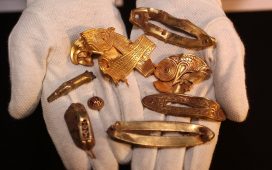Noctilucent clouds are a rare and special sight. Only visible at latitudes between 45° and 80°, these shimmering wispy silvery-blue clouds can occasionally be seen high in the sky on a clear summer’s night. But in recent decades they have been making more frequent appearances and now a new study reveals that space launches are helping to spawn them.
Made up from very thin sheets of ice crystals, noctilucent – “night-shining” – clouds only form under special conditions. High up in the dry mesosphere, about 50 miles (80km) above Earth’s surface, the clouds need dust particles, moisture and very cold temperatures to form. Explosive volcanic eruptions sometimes produce these ingredients, and meteor showers too. In the 19th century, noctilucent clouds were only seen once every few decades but now they can be seen several times every summer, with July the most likely month. So what’s changed?
Writing in the journal Earth and Space Science, researchers show a strong correlation between summer rocket launches and the frequency of noctilucent clouds. Each launch spews out tonnes of water vapour that, if the wind is blowing the right way, settles out and helps to trigger cloud formation. Along with rocket launches, climate change is also thought to be playing a role, making noctilucent clouds a more regular feature of the night sky.










